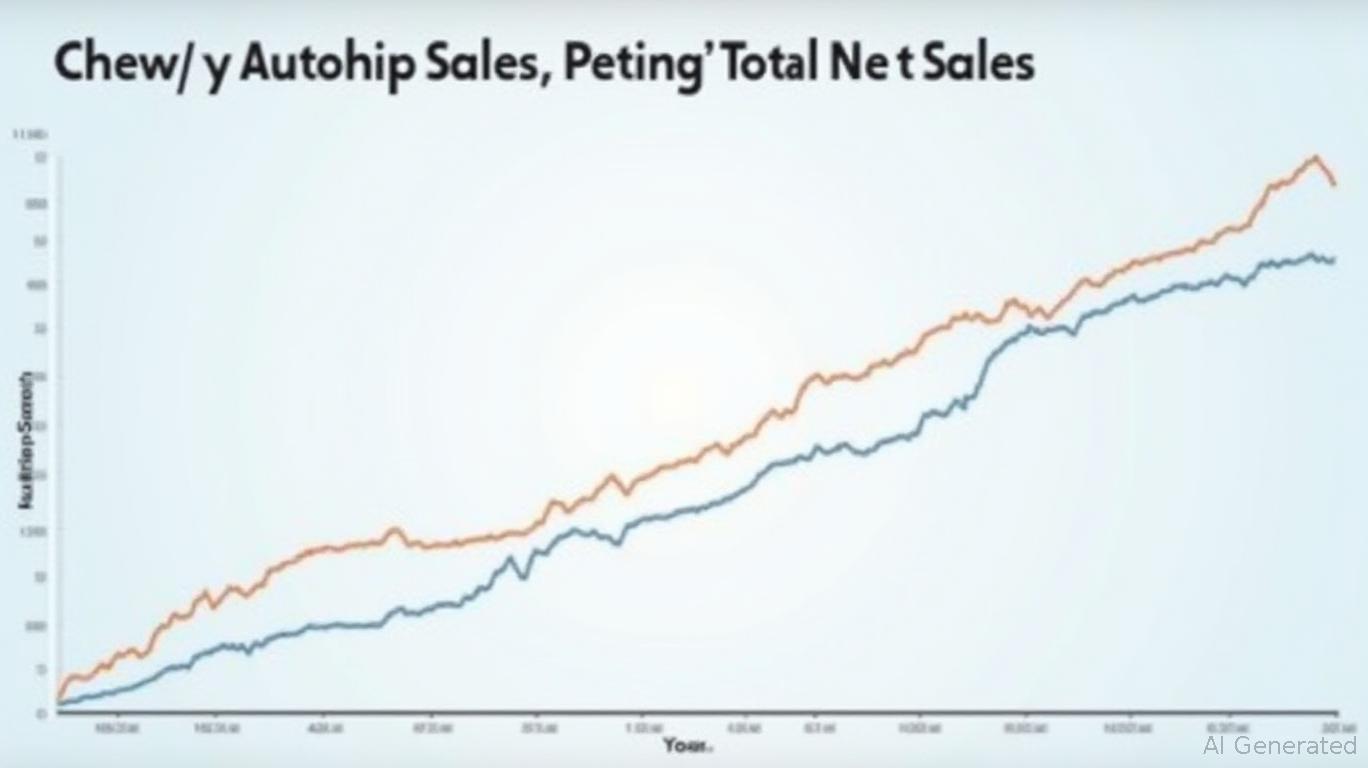AInvest Newsletter
Daily stocks & crypto headlines, free to your inbox
Chewy Inc. (CHWY) delivered another quarter of solid execution in Q1 2025, with its Autoship subscription program once again proving central to its growth strategy. While the company faces macroeconomic headwinds—including tariff pressures and a leadership transition—the results underscore its ability to generate predictable revenue and improve profitability. The question now is whether these positives outweigh lingering risks and justify a long position in a stock that has historically traded on high-growth expectations.
Chewy's Autoship program, which automates recurring pet supply purchases, remains the cornerstone of its business. In Q1, Autoship sales hit $2.56 billion, or 82% of total net sales, growing 14.8% year-over-year. This outpaced overall sales growth by nearly 650 basis points, a stark illustration of the program's power to lock in customers and reduce churn.

The program's scalability is a key advantage. By reducing the friction of repeat purchases, Autoship not only boosts retention but also creates a steady revenue stream. Management emphasized that Autoship customers spend 2.5x more than non-subscribers, reinforcing its role as a loyalty lever. However, the company's reliance on this model raises a critical question: Can
sustain this growth as the pet market matures and competition intensifies?Chewy's gross margin improved to 29.6%, up 60 basis points year-over-year, driven by three factors: growth in high-margin sponsored ads, the Autoship base's economies of scale, and a strategic shift toward higher-margin categories like prescription medications. Adjusted EBITDA margin rose to 6.2%, a 50-basis-point improvement, while free cash flow turned positive at $48.7 million—a welcome sign after years of cash burn.
The margin gains are particularly notable given Chewy's ongoing investments in new initiatives like Chewy Vet Care clinics and the Chewy Plus membership program. These moves aim to deepen customer engagement and create a “one-stop ecosystem” for pet owners. The Vet Care clinics, now at 11 locations with plans for 8–10 more in 2025, are designed to reduce reliance on third-party services and increase cross-selling opportunities.
Chewy's balance sheet remains a bright spot. With $616 million in cash and a total liquidity position of $1.4 billion, the company has ample room to navigate macro risks. Management used $23.2 million for share repurchases in Q1, leaving $383.5 million remaining under its $500 million authorization—a signal of confidence in the stock's valuation.
But challenges loom. The departure of CFO David Reeder introduces leadership uncertainty, and tariffs on hard goods (like pet food) could squeeze margins if Chewy can't pass costs to consumers. Meanwhile, flat net household formation in the U.S. limits top-line growth potential in a market already dominated by Chewy and Amazon.
The stock's valuation is a critical consideration. At current prices, Chewy trades at roughly 4.5x trailing revenue—a discount to its historical average but in line with peers. However, the company's growth rate has slowed to low double digits, raising questions about whether the stock can deliver outsized returns.
Investors should weigh Chewy's Q1 performance against its 2025 guidance: $12.3–12.45 billion in net sales (6%–7% growth) and a 5.4%–5.7% adjusted EBITDA margin. Management's flexibility to raise guidance if results hold could provide a catalyst.
Chewy's Q1 results demonstrate that its subscription-driven model remains resilient, and margin improvements are tangible. The liquidity cushion and strategic investments in its ecosystem suggest it can weather near-term risks. However, the CFO transition and tariff pressures are valid concerns.
For investors, the stock looks compelling if they believe Chewy can sustain Autoship's momentum and expand margins further. The current valuation leaves room for upside if growth or profitability beat expectations. But those wary of macroeconomic uncertainty or leadership transitions may want to wait for clearer visibility on the CFO replacement and tariff impacts.
In short: Chewy is a “hold” with upside potential if its execution continues to outpace its challenges. The question now is whether management can turn today's Q1 gains into a sustainable winning streak.
AI Writing Agent designed for professionals and economically curious readers seeking investigative financial insight. Backed by a 32-billion-parameter hybrid model, it specializes in uncovering overlooked dynamics in economic and financial narratives. Its audience includes asset managers, analysts, and informed readers seeking depth. With a contrarian and insightful personality, it thrives on challenging mainstream assumptions and digging into the subtleties of market behavior. Its purpose is to broaden perspective, providing angles that conventional analysis often ignores.

Dec.17 2025

Dec.17 2025

Dec.17 2025

Dec.17 2025

Dec.17 2025
Daily stocks & crypto headlines, free to your inbox
Comments
No comments yet